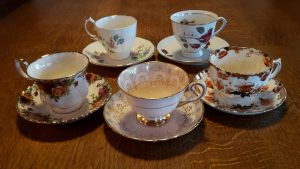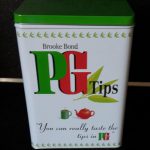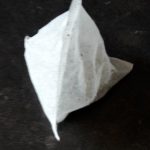- KettlesKettle: “a container or device in which water is boiled, having a lid, a spout and handle”. I recently received a high tech kettle as a birthday present. It’s great. I can now boil the water at the correct temperature for all my teas. No longer do I have to take the lid off the kettle to wait until I think it’s cooled to 80 degrees. White, yellow, green, black.. all tasting perfect.
- Mongolian Tea
Mongolian Tea (Suutei tsai) is an important part of Mongolian culture and is apparently quite different to any other tea. Served in little bowls with most meals, it is made with green tea (often of poor quality), yak milk or butter and salt! This sounds a little strange but given the chance I would try it.
Marco Polo
Why Mongolian tea? Well, I have been recently watching “Marco Polo” on Netflix. It was recommended to me by a friend and, in my opinion, worth taking a look. The series is based on the book “The Travels of Marco Polo” which was written by the famous Italian adventurer and follows his journey (1271-1295) as a merchant in Asia.
Most people know Marco Polo as an explorer and traveller. He rode with his father and uncle along the, often, dangerous trade routes between Russia and Europe. Later these roads became known by such names as the Tea Trail and the Silk Road.
Kublai Kahn
In the first series of “Marco Polo” our hero passes through Mongolia and meets the great leader, Kublai Kahn. It is set in a time of Mongolian dominance in Asia and expansion into China. We see lots of exciting martial arts fights with some rather flamboyant camera shots and costumes, and maybe for some viewers, a little too much nudity and violence.
Mongolian horses
Mongolia was, and still is, a country of nomads and today its human population is outnumbered by horses. Traditionally, the country’s tough little horses were used for riding and for transporting goods such as tea. The breed has changed very little since the time of Kublai Kahn.
Even today the horse is still important to the nomadic people of Mongolia: whilst riding around the land and living in their ger (yurt or tent) they use horse’s milk, meat and hair. Horse dung can even be burnt as campfire fuel.
I admire such people who are self sufficient and live off the land. Perhaps a reason to visit “the land of blue sky” with its beautiful landscape and slow pace. An escape from our modern rat race.
An armchair tourist
As much as I love the idea of travelling, I am a bit of an “armchair tourist”: someone who has lots of ideas of where to go but can’t actually decide which one is best. Today Toscana, tomorrow Sri Lanka! Some people prefer to stay at home and there are people who have very “itchy feet” (Fernweh) and need to get away.
- Teacups
My interest in all things to do with tea has developed since I moved to Germany and I want to dedicate one side of my blog to my take on tea. I have had fun researching this topic and hope to post regularly on “Time 4 Tea” . All definitions are based on the Oxford English Dictionary (OED)
Teacup: “a cup from which tea is drunk”. A teacup has usually got a handle and sits on a saucer.

In my office where I teach English I have a small collection of vintage teacups and saucers which I use to serve my customers tea. In my opinion there is nothing more English than drinking tea from a bone china teacup.
Teacups come in a variety of colours and designs. Just turn over a cup to see where it was made. Most English porcelain was manufactured in the Staffordshire Potteries, by such famous companies as Wedgwood, Spode and Doulton. After the introduction of Afternoon Tea in the mid 1800s, there was high demand for fine bone tea sets. Even today there has been a revival.
There are a number of idioms or phrases relating to a teacup:
“It’s not my cup of tea” means that you don’t like something or you are not interested in it.
Example: ” Some people love watching football, but it’s not my cup of tea.“
“A storm in a teacup” means that there is a lot of excitement about an unimportant thing.
Example: “After our argument, we agreed it was not serious and that it was only a storm in a teacup“
Have you ever heard of a “teacup dog”? This expression is new to me. It is a puppy or dog which is so small that it fits in a teacup. These undersize dogs are often sold at a high price because they look so cute but may have health problems.
If you feel inspired, why not have your own tea party like in Alice in Wonderland or Downton Abbey.
It’s never too late! There’s always time for tea.
- Chimp the PG Tips Monkey
Found: Chimp the Monkey

Chimp the monkey Whilst recently visiting family in England I was really excited to discover a knitted monkey from PG Tips. Chimp was perched on a radio in my brother-in-law’s kitchen. You may remember I talked about him in my last blog. What a joy!
- An Englishwoman from York
I’m an Alien
“I’m an alien, I’m an alien. An Englishman in New York” is what Sting sings in his single from 1988. That’s not true of me. As an expat in Germany, I consider myself a “tea-loving Englishwoman from York” who feels far from being an alien. Ok, I admit that I have the odd moment when I say something stupid and people look at me as if I am from another planet!
English Tea
Over the years the list of things I miss from England has got shorter. Now there is only one thing on it: PG Tips teabags. We British are well known for our love of tea and I am no exception. A cuppa first thing in the morning, several during the day and, of course, a bedtime mug of tea. My German friends are amazed that my husband and I can sleep…no, we don’t end up bouncing off the walls due to a caffeine overdose!
Why PG Tips?
For as long as I can remember I have drunk PG Tips and regular trips to England or visits from friends and family mean we have a constant supply of our favourite teabags.
Mr. Arthur Brooke branded his tea in the 1930s Pre-Gest-Tea (PG) which he claimed helped digestion if drunk before a meal. The Tips refers to the quality of the tea – only using the bud and the first 2 leaves of the tea plant.

A PG Tips tea caddy PG Monkeys
PG Tips is part of English culture mainly as a result of the company’s clever advertising campaigns over the years. In the 1970s the TV commercials with the Tipp family of chimpanzees provided great entertainment. Most of us “oldies” remember Mr. Shifter and the piano (check out the video on You Tube). Quite rightly the real monkeys have since been replaced with a knitted monkey.
Teabags
Teabags are so practical and, supposedly, their invention was an accident. In the early 1900s an American tea merchant, Thomas Sullivan, sent “teabags” in silk bags to his customers to promote sales. These teabags were then put directly into the teapot rather than the contents being emptied into the pot.
Today the added string makes them so practical (handy) for making tea in a mug – no more burning your fingers!
The PG Pyramid is perhaps one of the wonders of the tea world! This clever little bag makes an even better cup of tea – its pyramid shape allows it to move around in the hot water.

A PG Tips Pyramid teabag I’ve even resorted to taking a supply of teabags with me on holiday but the only problem is that German hotel rooms often don’t have a kettle, which is worse than having a bottle of wine without a corkscrew! Room for improvement, I think, don’t you?
Not my cup fo tea!
Everyone is different. Some tea-drinkers prefer loose tea, some teabags. Some like weak tea, some strong. Some prefer milk first, some milk last. It even varies from region to region in the UK.
Please, if ever you make me a cup of tea, make it strong. There is nothing worse than a milky weak tea…certainly not my cup of tea!
Milk, no sugar, please!
For me it has to be fresh semi-skimmed milk. Anything else will not do. My dislike for full-fat milk stems back to my days living on a farm. When a cow has a calf it produces milk for the next few days which is high in colostrum and is very creamy. I remember the blobs of cream floating on my cornflakes and, even worse, in my tea. Not a good start to the day! Even now, the thought turns my stomach. Sorry folks, let’s change the subject.
Dunking bisicuits
I suppose the ultimate treat when having a cuppa is to dunk a biscuit in your tea. Not exactly tea ettiquette but so long as no-one is looking , it’s Ok. My top “dunkers” are McVitie’s Ginger Nuts, Rich Tea biscuits and plain Digestive biscuits (not chocolate covered because there’s nothing worse than getting chocolate all over your hands and, inevitably, your clothes!).
There’s always Time 4 Tea
Drinking tea is part of everyday life in the UK. It doesn’t matter when or where. A tea break may only be for 15 minutes but the ritual of filling the kettle, switching it on and then waiting until the water boils allows you time to take time out. Keep calm and put the kettle on.
Alone the question: “Shall we have a cup of tea?” is so comforting. The answer: “Oh, go on then!” at first sounds like a sign of resignation but it is actually an inner smile at the anticipated pleasure.
All this talk about tea has made me thirsty, so it’s time to boil the kettle. I am sure I’ll have a lot to chat about next time.
Ciao, or is it Chai? 🙂